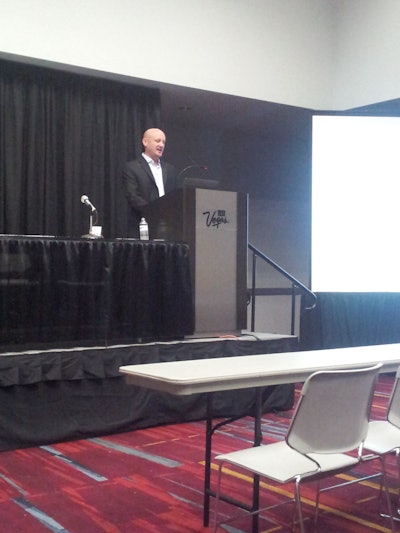
There is no straightforward, simple definition of what sustainability means to the construction industry. Sustainable development is development that meets the needs of today without destroying resources for the future. However, there are few tools or even metrics available that can help decision-makers select one construction material over another in relation to sustainability. There is a simple reason for that: the sustainability of concrete — the most widely used material in the world — is still a difficult concept to quantify.
Defining Sustainability
According to the U.S. Environmental Protection Agency, sustainability is based on a simple principle: everything we need for our survival and well-being depends, either directly or indirectly, on our natural environment. Through sustainability efforts, we can ensure that we have, and will continue to have, the water, material and resources needed to protect human health and the environment.
The sustainability of a construction material is affected by at least two factors: the amount of non-renewable materials that enter into its manufacturing and its lifespan before it has to be replaced and manufactured again. The Concrete Joint Sustainability Initiative states that “to date, most sustainability or green voluntary certification programs attempting to qualify sustainable materials have focused primarily on energy, material and water conservation; indoor environmental quality; and site selection and development.” While these are all important aspects of sustainable building design and construction, lifecycle does not appear to be an integral part of that definition.
Concrete does not last forever. The economic impact of aging infrastructure costs thousands per year in traffic delays. Durability is one of the most important characteristics of concrete sustainability, in addition to shrinkage, strength, crack resistance, joint stability, corrosion potential and sulfate resistance.
A Greener Solution
Is it possible to produce a “green” concrete? Not unless a new materials chemistry is developed that would yield mechanical properties similar to the “liquid stone” while tapping less into nonrenewable resources.
According to Ken Vallens, Vice President of Product Development and Engineering Sales at CTS Manufacturing Corp., one “greener” concrete that is available is calcium sulfoaluminate (CSA) cement. CSA is lighter cement in color, which reduces the heat island effect.
“This rapid-setting cement requires burning mixtures of limestone, bauxite and gypsum at lower temperatures than portland cement,” said Vallens. “It’s approximately 2700° F for portland cement vs. 2250° F for CSA cement. This lower burning temperature reduces the amount of energy and carbon dioxide emissions associated with portland cement production.”
Vallens explained that CSA cement also requires less limestone, the primary source of carbon dioxide released during the chemical sintering process. CSA clinker is also easier to grind, which reduces the energy needed during the milling process. Consequently, CSA cement can play a significant role in improving the sustainability of construction materials by simply reducing the quantity of non-renewable resources used during manufacturing. The use of resources is just one part of the equation. Durability — or lifecycle — is the other component of sustainability.
A Sustainable Definition
When selecting a building material (e.g. asphalt vs. portland concrete vs. CSA concrete) sustainability should be easily quantifiable. One method for assessing the sustainability of construction material could be to divide its lifecycle by the amount of non-renewable resources required in the manufacturing process.
Using this method, a “Sustainability Index” would look like this:
Sustainability Index (S) = Lifecycle Resources
Lifecycle is the durability of concrete, in years. It is linked to fatigue life and other material properties such as shrinkage, cracking and porosity.
Resources refers to the quantity of non-renewable resources used in concrete manufacturing (such as, but not limited to, carbon footprint).
The Sustainability Index, as defined above, can have the unit of [yd3*years/ton-CO2].
In this equation, sustainability is tied to lifecycle. If the lifecycle of one-cubic meter of concrete were infinite, it would be infinitely sustainable; however, if the entirety of our planet’s resources were required to manufacture the same amount of concrete, it would not be sustainable.
“The Sustainability Index helps to quantify the sustainability of producing and using one cubic meter of concrete in simple, measureable terms,” said Vallens
The Lifecycle of Concrete
This simple, straightforward index can help rate the sustainability of various materials and mix designs and help decision-makers choose materials consistent with stated sustainability goals.
“The Sustainability Index brings lifecycle into the equation: a greater lifecycle decreases the burden on our resources,” said Vallens. “A 100-year pavement would have five-times the Sustainability Index of a 20-year pavement, all other parameters being equal. At equal lifecycle, a mix design with half the carbon footprint would have twice the sustainability. It is a simple concept tying economic decisions to materials properties.”
The concept also highlights that the sustainability of concrete is, above all, a materials property: lower shrinkage and lower porosity increase lifecycle, for example. Doubling the lifecycle while halving the carbon footprint, quadruples the Sustainability Index. Using this approach, the sustainability of concrete is not such a nebulous concept – its basic definition becomes “the lifecycle of the material per unit of non-renewable resources.”
With this definition of sustainability for the concrete industry, decision makers now have a tool allowing them to choose between materials of different lifecycles made with different resources.
Choosing a sustainable building material should be matter of figures and numbers.
CSA Concrete and LEED Certification
CSA cement can play an important role when it comes to enhancing the sustainability of construction materials, mostly because its chemistry and materials science differ from the wellestablished, but old standards of portland cement. It can play a significant role in the sustainability of concrete technology from the perspectives of raw materials use, energy demand, carbon footprint, and pavement longevity. A combination of low calcium content and low burning temperatures allows CSA cement to yield concrete with lower carbon footprints than portland cement. When used as a shrinkage-compensating additive to portland cement, CSA can also improve sustainability through a decrease or total elimination of shrinkage, resulting in an increase in lifecycle.
Users of CSA cement can earn points towards LEED certification according to Vallens. LEED (Leadership in Energy and Environmental Design) is a voluntary program developed by the U.S. Green Building Council to provide third-party verification of green buildings.
CSA cement meets guidelines for LEED credits through its use of byproducts. Calcium sulfoaluminate requires aluminum oxide and calcium sulfates. These compounds can be introduced using by-products of aluminum can recycling or synthetic gypsum as raw materials. These byproducts eliminate the need for bauxite and gypsum mining.
The improved sustainability of CSA-based concrete is due to a combination of factors:
- Lower emission of greenhouse gases
- Lower emissions of smog-producing nitrogen oxides
- The use of recycled raw feedstock materials
- Longer lifecycle through higher strength, lower shrinkage and lower porosity.
Cost Considerations
Cost is a significant factor in the selection of sustainable building materials. On a pound-forpound basis, CSA cement is approximately three times more expensive than portland cement, or 1.2 times more expensive than portland cement accelerated with organic additives. This differential is thought-provoking for engineers and specifiers responsible for selecting a repair material: does it make more sense to select a cheaper, less durable material when the longerlasting alternative is more expensive?
“As a matter of accountability to the public who generally pays for these repairs, the long-term benefit of a longer lasting pavement outweighs the short-term impact on a budget,” said Vallens.
“A cheaper material that needs to be replaced in 20 years simply shifts the burden to our children. Pavement rehabilitation must make lifecycle its first priority over purchase price.”
The Sustainability Index now becomes an important tool. It helps engineers and specifiers make decisions on cost and lifecycle considerations and environmental impact without being overly complex.
The industry must educate itself on the advantages of the technology for CSA to become widely used. There is always inertia in specifying a material that deviates from standards, especially if those standards were established in the 19th century. When engineers have a choice of materials, they need a tool to differentiate between them. The Sustainability Index are one of many valuable tools that help decision-makers make informed, sustainable materials choices in tight fiscal times.
The construction industry will begin to look at calcium sulfoaluminate cement with a fresh eye because of its impact on sustainable development and the improvement of our infrastructure.


















